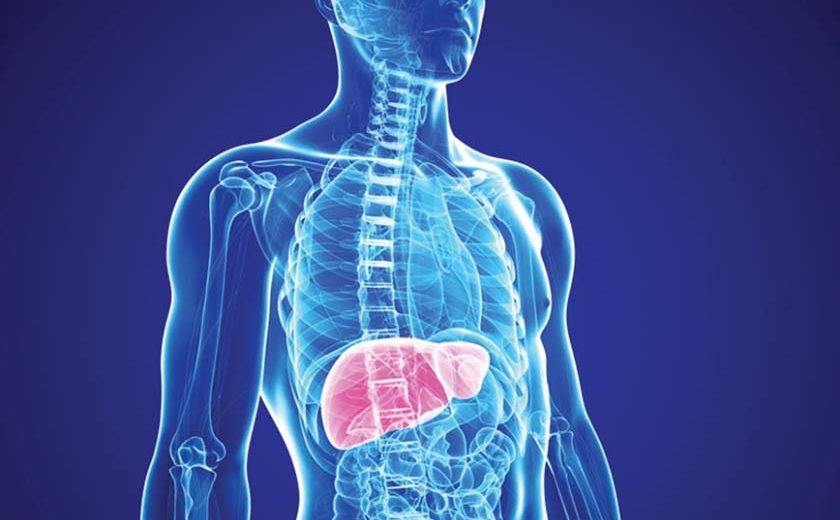The brain thinks and the heart beats. But, what about your liver? It produces bile, neutralises poison, converts excess glucose into glycogen as well as regulating blood clotting.
So, are you taking care of your liver and making sure you don’t get any of the main five types of Hepatitis – an inflammatory liver disease? Read all about hepatitis in our special health article this month, know your myths surrounding the liver disease, as told by Columbia Asia Cheras Chief Medical Officer, Dr Mohd Fadhli Mohd Yusof, and learn how food plays a part for those with Hepatitis A as explained by Gleneagles Medini Hospital Consultant Physician, Gastroenterologist & Hepatologist, Dr Lua Guan Way
Hepatitis A
- Hepatitis A is a viral liver disease that can cause mild to severe illness.
- The hepatitis A virus (HAV) is transmitted through ingestion of contaminated food and water or through direct contact with an infectious person.
- Almost everyone recovers fully from hepatitis A with a lifelong immunity. However, a very small proportion of people infected with hepatitis A could die from fulminant hepatitis.
- The risk of hepatitis A infection is associated with a lack of safe water, and poor sanitation and hygiene (such as dirty hands).
- Epidemics can be explosive and cause substantial economic loss.
- A safe and effective vaccine is available to prevent hepatitis A.
- Safe water supply, food safety, improved sanitation, hand washing and the hepatitis A vaccine are the most effective ways to combat the disease.
Hepatitis B
- Hepatitis B is a viral infection that attacks the liver and can cause both acute and chronic disease.
- The virus is transmitted through contact with the blood or other body fluids of an infected person.
- An estimated 257 million people are living with hepatitis B virus infection (defined as hepatitis B surface antigen positive).
- In 2015, hepatitis B resulted in 887,000 deaths, mostly from complications (including cirrhosis and hepatocellular carcinoma).
- Hepatitis B is an important occupational hazard for health workers.
- However, it can be prevented by currently available safe and effective vaccine.
Hepatitis C
- Hepatitis C is a liver disease caused by the hepatitis C virus: the virus can cause both acute and chronic hepatitis, ranging in severity from a mild illness lasting a few weeks to a serious, lifelong illness.
- The hepatitis C virus is a blood borne virus and the most common modes of infection are through exposure to small quantities of blood. This may happen through injection drug use, unsafe injection practices, unsafe health care, and the transfusion of unscreened blood and blood products.
- Globally, an estimated 71 million people have chronic hepatitis C infection.
- A significant number of those who are chronically infected will develop cirrhosis or liver cancer.
- Approximately 399,000 people die each year from hepatitis C, mostly from cirrhosis and hepatocellular carcinoma.
- Antiviral medicines can cure more than 95% of persons with hepatitis C infection, thereby reducing the risk of death from liver cancer and cirrhosis, but access to diagnosis and treatment is low.
- There is currently no vaccine for hepatitis C; however research in this area is ongoing.
Hepatitis D
- Hepatitis D virus (HDV) is a ribonucleic acid (RNA) virus that requires hepatitis B virus (HBV) for its replication. HDV infection occurs only simultaneously or as super-infection with HBV.
- The virus is transmitted through contact with the blood or other body fluids of an infected person.
- Vertical transmission from mother to child is rare.
- Currently there is no effective antiviral treatment for hepatitis D.
- Hepatitis D infection can be prevented by hepatitis B immunisation.
Hepatitis E
- Hepatitis E is a liver disease caused by infection with a virus known as hepatitis E virus (HEV).
- World Health Organisation (WHO) estimates that hepatitis E caused approximately 44,000 deaths in 2015 (accounting for 3.3% of the mortality due to viral hepatitis).
- The virus is transmitted via the faecal-oral route, principally via contaminated water.
- Hepatitis E is found worldwide, but the prevalence is highest in East and South Asia.
- A vaccine to prevent hepatitis E virus infection has been developed and is licensed in China, but is not yet available elsewhere.
How does food and your diet play a part for those with Hepatitis A?
 Gleneagles Medini Hospital Consultant Physician, Gastroenterologist & Hepatologist, Dr Lua Guan Way explains
Gleneagles Medini Hospital Consultant Physician, Gastroenterologist & Hepatologist, Dr Lua Guan Way explains
- Food affects the possibility of getting Hepatitis. How?
You might consume food or water that has been contaminated by faeces containing the Hepatitis A virus. Unpeeled and uncooked fruits and vegetables, shellfish, ice and water are common sources whereby you may come in contact with the stool or blood of a person who currently has the disease.
Meanwhile, excessive alcoholism will lead to Alcoholic Hepatitis whereas too much intake of fatty and sugary foods may bring about Non-Alcoholic Steatohepatitis (NASH).
Best foods to avoid liver damage from Hepatitis?
As an old saying goes, “you are what you eat.” This is true as your unhealthy habits contribute to your debilitating health. There are certain foods which are either beneficial or detrimental to our liver health. Food that are generally good for your liver are enriched with antioxidants, omega-3 fatty acids, vitamins, catechins and selenium.
These are a few examples of liver friendly foods:
Avocado | Avocado contains an abundance of an antioxidant also known as glutathione. It is mainly used to eradicate toxic substances from your liver. Studies show that taking two to five slices of avocado daily is sufficient to maintain liver health.
Broccoli | Broccoli is an edible green plant in the cabbage family whose large flowering head is commonly consumed as a vegetable. Broccoli is enriched with isothiocyanates, which contains sulfur to ward off liver irregularities and compounds prone to cause cancer.
Beetroot | Beetroots, also known as the beet, table beet, garden beet, red beet or golden beet are commonly used for food colouring and medicinal plant due to the betalains within. Betalains are antioxidants whose function is to reduce the concentration of homocysteine, a substance that is harmful to blood vessels.
Fish| Fish is well known for its abundant supply of amino acids. Amino acids are enzymes generally found in various types of proteins. They are important for liver protection and detoxification. Fish also contains nutrients like omega-3 fatty acids, which are widely known for their anti-inflammatory properties.
Lemon | Lemons contain 5% to 6% citric acid, with a pH of around 2.2, giving it a sour taste. Lemon is rich in Vitamin C, which is again an essential antioxidant. As suggested by nutritionists, at least one lemon a day will be adequate for sustaining our liver health.
Olive Oil | Olive oil is a liquid fat obtained from olives, a traditional tree crop of the Mediterranean Basin. It is commonly used in cooking, cosmetics, pharmaceuticals and soaps. Olive oil contains a high proportion of monounsaturated fats (oleic acid) that helps to eliminate serum triglyceride along with bad cholesterol in your body. This will help to increase your lipid oxidation and keep your liver healthy.
Turmeric | Turmeric is the spice that gives curry its yellow colour. Curcumin is the main active ingredient in turmeric, which is well known for its potent anti-inflammatory and antioxidant effects. Again, this will help to defend against the detrimental effects of free radicals that are harmful to your liver.
Lentils | Lentils are a high-protein, high-fibre member of the legume family. Lentils are also an excellent natural source of folate and manganese. Consuming lentils provides the required amount of protein to promote liver health.
Tomatoes | Tomatoes are the major dietary source of the antioxidant lycopene, which has one of the highest antioxidant activity of all the carotenoids. Besides protecting our liver, it is also linked to many health benefits, including reduced risk of heart disease and cancer. Tomatoes also provide a great source of Vitamin C, potassium, folate and Vitamin K.
Grapefruit | The grapefruit is a cross between an orange and a pomelo. Grapefruits are low in calories but are full of nutrients, especially Vitamins A and C. Studies have shown that eating grapefruit will reduce the risks of obesity, diabetes, heart disease and other chronic liver diseases.
Green Tea | Some may argue that green tea is the healthiest beverage on the planet. In fact, they may be right due to its high content of powerful antioxidants and nutrients, such as catechins. These catechins help to maintain liver health and proper functionality. Regular consumption of green tea can reduce symptoms of diseases like liver steatosis, liver cirrhosis and hepatitis.
 Worst foods that contributes to liver damage?
Worst foods that contributes to liver damage?
There are certain foods harmful to your liver that should be avoided.
Fatty/fast Food | A lot of people love fast food like burgers and fries, especially the younger age group. These foods contain high amounts of fat and calories. The liver will have a hard time digesting the fat content of these food. In time, this may result in liver inflammation and scarring.
Sugar | Perhaps it’s time to reconsider and make some dietary changes, especially if you are having a sweet tooth. While most people love having sweet foods, sugar is actually very harmful to the liver. Excess sugar is converted to fat which may end up accumulating in our liver and circulation system. As a result, you can end up having a fatty liver disease with impairment to your liver function.
Canned/Processed Food | All food items that have been canned, bagged, or boxed are categorised as processed food. Processed foods contain a plethora of unhealthy ingredients including excessive salt, preservatives, artificial sweeteners emulsifiers and colourants. Lab studies determined mice that consumed processed food for a longer period of time had more body fat, higher levels of fat in the bloodstream and double the amount of fat in their liver, than the group that ate unprocessed food.
Alcohol | Alcoholism is like a mantra where liver disease is concerned. An occasional drink may not cause much harm but regular and high-volume alcohol consumption can irreversibly scar the liver, and result in many liver disorders like cirrhosis. Avoid drinking beer, wine or champagne as well as any form of liquor.
Rice/White Bread | Rice/bread is the staple food of more than half of the world’s population. However, it is advisable to avoid taking large amount of rice, as it can increase blood sugar levels. White bread is devoid of fibre as it made from refined flour. Thus, it also contains higher sugar concentration that will contribute to build-up of liver fat. As a substitute, brown rice / whole grain bread is the preferred choice.
Animal-Based Foods/Red Meats | If you already have some liver damage, it is good to avoid red meat as the damaged liver will have a difficult time digesting the high protein content. If your body cannot break down red meat properly or you consume a greater than manageable amount of red meat, the waste products can build up. Red meat, such as beef and bison, also contains high amount of saturated fat, which is bad for your heart and blood vessels. It is better to go for other lean meat, poultry foods and plant-based products such as soy milk.
If you have Hepatitis A, what type of food helps with the recovery process?
There are a few steps you can take:
- Eat regular, balanced meals
- Maintain healthy calorie intake
- Eat whole-grain cereals, breads and grains
- Eat lots of fruits and vegetables
- Get adequate protein
- Go easy on fatty, salty and sugary foods
- Drink enough fluids
This is to promote adequate daily energy and calorie intake as well as reduce excess fat and sugar that require the liver to work harder to detoxify and digest.
Can a pregnant women contract Hepatitis A and if she does, what type of foods should the mother eat?
Contracting Hepatitis A during pregnancy is rare. Although there is an increased risk for complications, they are usually not serious. Also, Hepatitis A has not been shown to cause death in either the mother or child, and babies born to mothers with Hepatitis A rarely contract it. If a pregnant mother has contracted Hepatitis A , she can follow the same diet advice as a normal person does.
Debunking Myths Surrounding Hepatitis
 Columbia Asia Cheras Chief Medical Officer, Dr Mohd Fadhli Mohd Yusof debunks and explain several myths with a focus on Hepatitis B (HBV)and Hepatitis C (HCV) infections as these two types of viruses can lead to chronic infections.
Columbia Asia Cheras Chief Medical Officer, Dr Mohd Fadhli Mohd Yusof debunks and explain several myths with a focus on Hepatitis B (HBV)and Hepatitis C (HCV) infections as these two types of viruses can lead to chronic infections.
Myth 1 – Screening is unnecessary if there are no drugs or out of wedlock sex
- HCV – Screening is not necessary for low risk population
- HBV – Debatable
- Malaysia is a country of medium seroprevalence of HBV infection in general population (1.5-9.8%). WHO suggested that county with medium to high seroprevalance should have universal screening test done for all population
- However, Infant immunisation in Malaysia started back in 1989 and brought down the prevalence of HBV infection to 0.3% which is below WHO’s standard ̶ 1%
- Infants prior to 1989 should have screenings done at least once in their lifetime
- Other than that, screen only if in high risk group
Myth 2 – A needle prick injury has higher chances of contracting HIV than Hepatitis B
- No. The risk for a HBV infection is higher than HIV
Myth 3 – I don’t have yellow skin, so my liver is healthy
- No, in early stage of chronic Hepatitis infection, majority of patients are asymptomatic while discoloration of sclera or skin only occurs in advanced stage liver diseases
Myth 4 – Some type of (Viral) Hepatitis are hereditary diseases
- No, all viral Hepatitis are infectious in origin
Myth 5 – If you are vaccinated, you won’t get infected with hepatitis B
- Not 100% true, vaccination is believed to give a lifelong immunity for HBV, or at least 18 to 19 years
- With 3 doses of vaccination, it gives >90% protection to HBV infection; 95 – 98% in children, 90 – 95% in adult)
References: World Health Organisation


